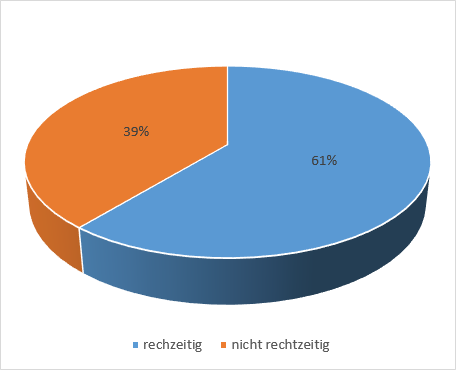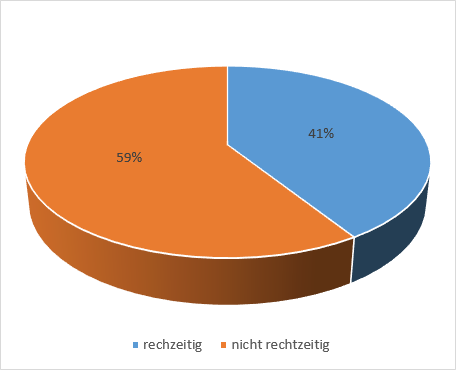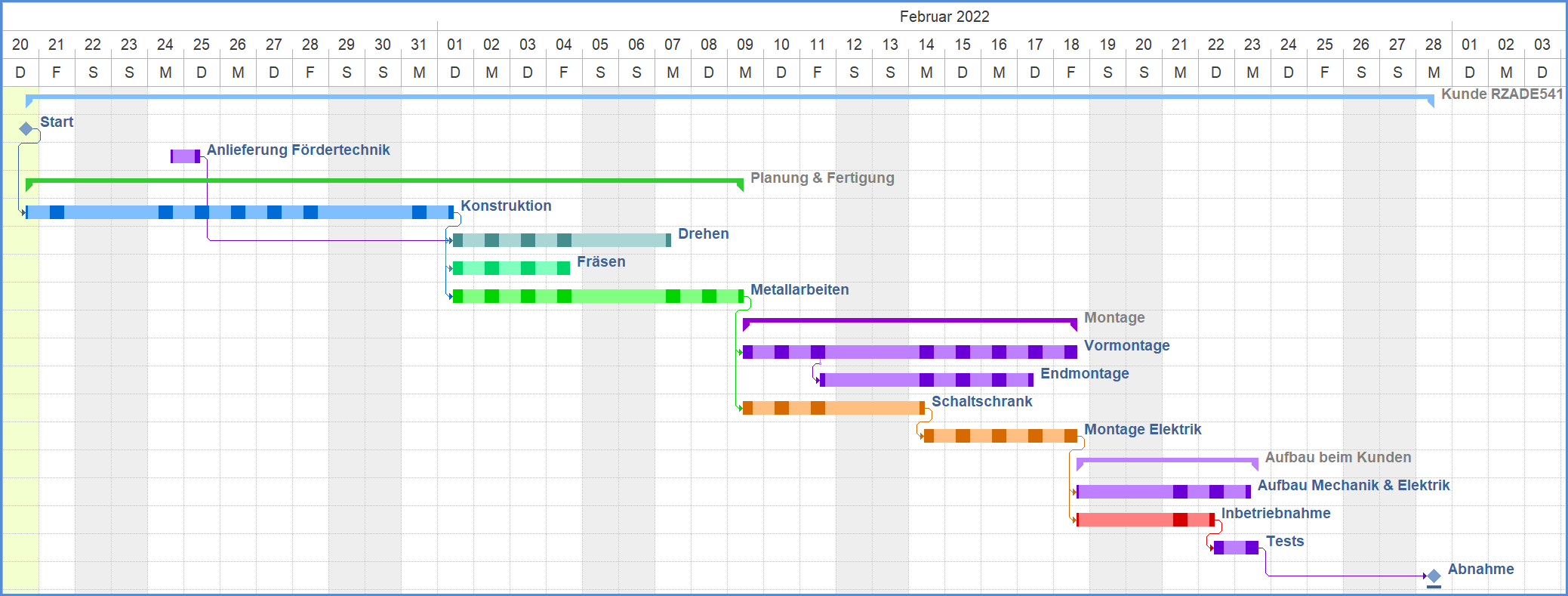Project Management Tools Comparison 2023
According to a report from the Project Management Institute (PMI), a global nonprofit organization for project management, companies with a clear project management structure completed 38% more projects successfully and achieved their original goals.

Project Management: Statistics and Interesting Facts
Did you know:
- Employees spend no more than 60% of their daily working hours productively.
- 21% of companies use a mix of standard project management methods (agile and waterfall).
- 27% of projects typically exceed the original budget (PMI, 2017).
- 41% of companies reporting frequent project failures receive inadequate support from managers and sponsors (PMI, 2018).
- 75% of IT project managers initially believe their projects are doomed to fail.
If you’re not new to project management, you probably know that project management tools can help with planning, creating, and coordinating your company’s work processes. One primary way they do this is by creating a clear project plan, assigning specific tasks to each project team member, and minimizing communication gaps.
Statistics provide valuable insights into how good software can save a team time and increase productivity:
 |  |
| :—————— | ———————- |
- 61% of companies using project management tools complete their projects on time.
- Only 41% of companies achieve the same results without project planning software (PMI, 2019).
- A project management system saves an average employee 498 working hours per year.
- Nearly half of project managers spend at least one workday manually creating and recording project reports.
- 42% of companies report deriving the most benefit from investing in project management software (Wellingtone, 2017).
Comparison of Project Management Tools
It’s important to know that there’s no one-size-fits-all project management software. The search process is often complicated because all project management tool providers claim in one way or another that their solution is “the best solution to realize your ideas and implement your projects.”
To help you choose your project management tool, we’ve provided an overview of common project management solutions and highlighted their strengths and weaknesses, including our own Rillsoft Cloud solution.
One of the key features of Rillsoft Cloud is its versatility. It can efficiently plan, analyze, and manage both a single project and an extensive project portfolio. It’s suitable for small construction companies as a construction time scheduling software and for large organizations with many employees and locations.
Here are the main focuses of the Rillsoft Cloud project management software:
- Involving users in collaboration, regardless of their location.
- Full access to the Rillsoft Cloud’s features at a single price.
- A 1-month trial period in which you can try all the features and tools of our project management tools free of charge and without restrictions on your real tasks in your work environment.
- The ability to adapt to changes within the company structure at any time.
- Provides a quick and easy overview through various visual views such as Gantt charts, network diagrams, personnel workload, etc., and an Outlook or Google calendar.
- The capacity balancing function provides detailed information about the number of required resources available for any future period.
- The ability to assign appropriate employees/resources to individual tasks and redistribute workloads among team members.
- Flexible configuration of access rights - each user only has access to the information they need for their work.
- Offers interfaces to other systems.
- Rillsoft Cloud’s scheduling software is suitable for many industries, including IT project management tools, construction scheduling software, production management tools for mechanical engineering, and agile software development.
Experiment, explore different project management tools, and weigh the pros and cons relevant to your company and team.

Project Management Tools - Overview of Competitors and Comparison
Asana
This project management application was developed by former Facebook employees and was initially intended as an effective tool for small to medium-sized businesses. However, its capabilities are also appreciated by many large companies.
Asana’s main advantage is its wide range of features. The functionality is diverse and can be used by regular employees, project managers, and executives.
However, this project management tool has its disadvantages. First, there’s a need for constant updates, like changing task statuses and adjusting their execution priority.
Another downside is how tasks are represented in a single tree structure. While this structure is intuitive for getting an overview of all pending work, it would be more convenient to display small tasks as a text to-do list.
Trello
Trello is a task-oriented whiteboard where tasks are categorized into different columns based on their status, such as “To-Do,” “In Progress,” and “Done.” Tasks are moved from the first to the last column as they progress. This method, called Kanban, was originally used in Toyota factories for controlling component delivery. Kanban principles have since been universalized and adapted for various applications, including project management, as Trello software demonstrates.
However, Kanban tools have certain disadvantages despite their user-friendliness:
- It’s impossible to estimate task scope, time spent, and time remaining until completion.
- It’s challenging to use for relatively large teams.
- Long-term planning is not possible.
Of course, Trello also has its advantages that make it a popular project management tool. These advantages include the ability to group tasks using colored labels, add comments and notes to each task, and attach files and links. There is also a convenient collaboration system and the ability to assign task owners.
Jira
Jira project management tools were initially developed for tracking and fixing code errors in programs and web applications. Jira is a feature-rich tool with extensive functionality, robust control and monitoring features, and easy collaboration. However, the service’s disadvantages outweigh the benefits.
Firstly, Jira does not allow the application of agile development principles, which are currently highly sought after - you can’t start a new task until the previous one is completed. The main problem with this project management tool is its complex, often non-ergonomic user interface. It contains too many elements, buttons, and functions, and their information value is minimal, often requiring trial and error to figure out their purpose. For users who have never used it before, it will likely be quite challenging.
Jira is a powerful application that allows development teams to plan projects, assign tasks to employees, plan sprints and backlog tasks, and set priorities and deadlines.
Pros:
- Drag and drop tasks in the backlog, in sprints.
- Numerous filtering options.
- Visualization, allowing quick navigation and making changes during sprints.
- Selection of reasons for task completion.
- Comprehensive reports.
- Easy project management.
- Simple and practical time tracking.
Cons:
- Many settings require a lot of time to understand. It’s often difficult to find answers to questions, and the FAQs do not provide adequate solutions to problems.
- There is no option to assign multiple team members to a task.
- Applying certain filter settings useful for the team can block existing settings.
Wrike
This project planning tool includes a variety of features for teamwork and project management of various scales. Its main advantage is the ability to create templates for typical tasks. If your activities involve recurring tasks, you’ll benefit from this feature.
Working with Wrike is made difficult by its clunky, unintuitive, and insufficiently informative interface. Accessing your current tasks is only possible through the computer screen. Moreover, the mobile version is poorly implemented and poorly synchronized with the PC version.
In general, Wrike is a highly specialized project planning software for typical project management that requires a long learning curve.
GanttPro
GanttPro is a web-based project planning software that includes a Gantt chart, enabling you to plan and manage projects online, visualize processes, create tasks, assign them to participants, set deadlines and completion percentages for individual tasks and the project as a whole, add milestones, and share the created Gantt chart with your team and customers who have the right to view it.
Pros:
- Availability of automatic project scheduling.
- Team collaboration capabilities: task comments, file attachments, quick notifications.
- Drag and drop to move tasks, set completion percentages, and more.
- The ability to set your workdays and times for better project management. You can set up personal calendars years in advance and use them as templates.
- Link tasks together.
- It’s interesting that you can undo actions and return a project to any point. This is helpful when someone on the team makes a mistake in the project.
- The ability to create complex, multi-level projects.
- Assignment of access rights and roles to team members.
- The ability to compare the current project status with the originally planned status. This is done through the baseline plan.
- Well-thought-out resource utilization.
- Personnel time tracking and task timer.
Cons:
- No pure mobile version and no mobile app.
- So far, there are only limited options for creating custom reports.

Monday
This platform is suitable for personal use as well as for teams. It offers project management features, current status analysis, and communication between all team members, managers, and clients.
Monday is based on templates - the tool provides many ready-made templates for different industries, each perfectly designed in terms of functionality. At the same time, you can create your workspace to manage your project. Each project is displayed as a separate board with tasks. Executives can be assigned to each project, and status and individual settings can be defined.
A downside is the high price and that the trial version lasts for only 14 days.
Teamwork
Another software for project and team management, it includes a practical task manager, a chat room for interacting with managers, and a customer support system. Free use is possible for personal purposes and for teams of up to 5 people, but functionality is limited in this case. To access the full range of features, you must pay €10 per user.
Getflow
Easy-to-use project planning software for team use. It allows clear task sorting based on the required order of execution. Tasks are grouped according to their status or ownership in different directories. There are separate directories for unassigned tasks, urgent tasks, and project steps with special priority. You can create an individual list for each task to structure its execution. Disadvantages of this project management software include reduced functionality during the trial period and interfaces with other common tools.
Basecamp
A project management tool based on the public cloud model. Basecamp was one of the first applications to include all the necessary functions for project planning software. Its key features are:
- Practical task list creation function.
- An efficient system for notifying about updates to ongoing tasks.
- Fully functional chat rooms for a team.
- Well-implemented planning tools.
- The ability to store files and documents in the cloud.
Basecamp is practical, but it comes at a high cost.
Hitask
A simple yet efficient project management program for managing and collaborating on projects. Its strengths include a drag-and-drop interface, user-friendly features for merging and sorting tasks, and integration with Google Calendar. Employees can discuss all current issues in a full-featured chat, add comments to activities, set reminders, and schedule appointments. This project planning software is primarily aimed at small teams, which is reflected in its price. One drawback is the lack of a graphical representation of the scope of ongoing tasks, such as with Gantt charts.
Easyprojects
This project management software is based on AJAX technology. It allows you to monitor the status of ongoing tasks in real-time, redistribute them among executing staff resources, and plan resource utilization. A significant advantage of this work planning software is the ability to visualize the entire project team’s work. In general, it stands out with an extensive and powerful toolkit, a straightforward and clear user interface, and 24/7 remote use. The drawbacks of Easyproject include a lack of features for controlling work resources and analyzing potential risks. Some users also complain that technical support is not available around the clock, as promised on the provider’s website.
ProjectLibre
This project planning freeware is an interesting alternative to Microsoft Project. It’s an open-source project management software that includes all the essential features for project planning software for free, including Gantt charts, PERT diagrams, network diagrams, earned value costing, resource calendars, and more. Import and export from MS Project are also supported. Multiple project management options for teams are also available.
It’s an excellent project planning program for small and medium-sized projects.
ProjectLibre offers more than 20 language options, and the language can be easily changed via the dropdown menu. However, the feature selection is not as extensive as in MS Project, and the user interface leaves a few desires unfulfilled.
Conclusion
We’ve presented a brief market overview of the most popular websites for professional management tools for teams and projects and shown that each has its own characteristics, both positive and negative. You should select the tools and services that best suit your activities and meet your requirements for project management tools.
